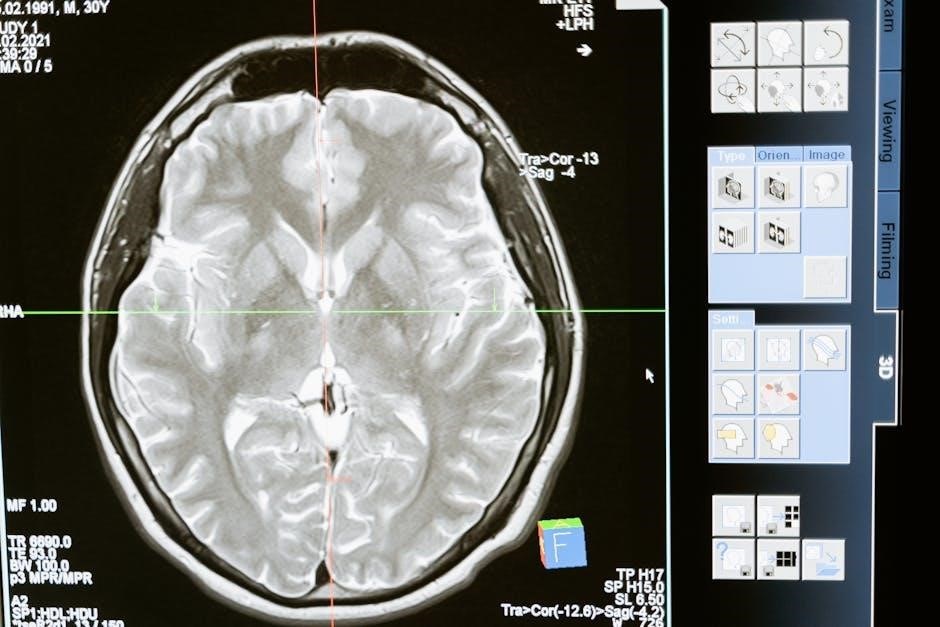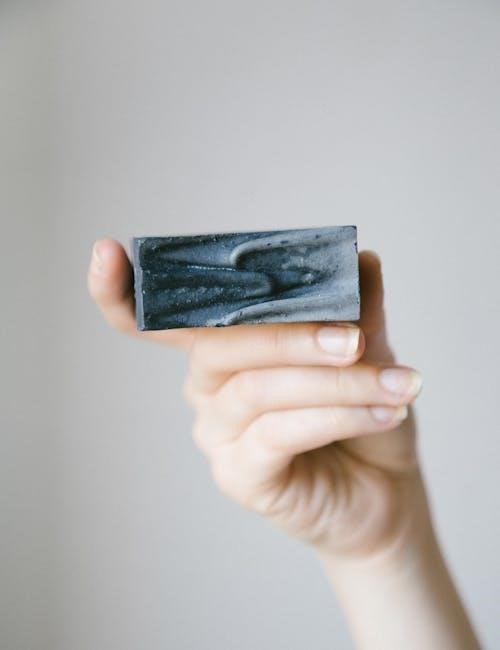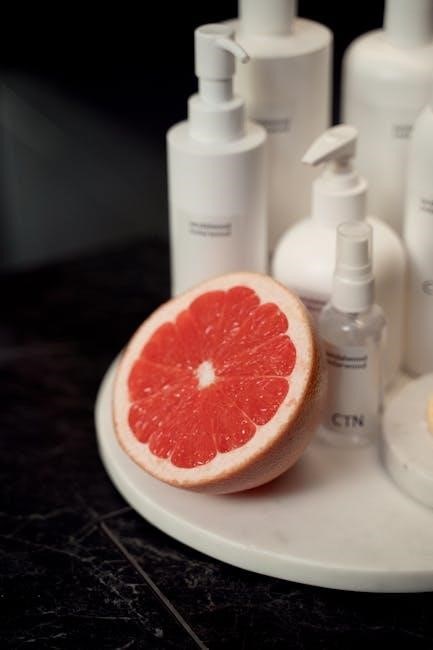Sculpey Clay is a popular polymer clay known for its ease of use and versatility in crafting․ It is non-toxic, soft, and ideal for creating detailed designs․
What is Sculpey Clay?
Sculpey Clay is a soft, non-toxic polymer clay made from polyvinyl chloride (PVC) and other ingredients, offering a pliable material for crafting․ It is oven-baked, making it durable and long-lasting․ Known for its ease of use, Sculpey is ideal for creating jewelry, sculptures, and home decor․ Available in various types like Premo and Soufflé, it provides diverse finishes․ A favorite among crafters and artists, Sculpey Clay is perfect for both beginners and professionals seeking creative expression․
Types of Sculpey Clay
Sculpey Clay comes in various forms, including Original Sculpey, Premo, Soufflé, and Liquid Clay․ Each type offers unique characteristics: Original Sculpey is soft and easy to condition, Premo provides vibrant colors and durability, Soufflé is lightweight with a suede-like finish, and Liquid Clay is ideal for detailing and effects․ These varieties cater to different project needs, offering versatility for crafters and artists․
Benefits of Using Sculpey Clay
Sculpey Clay is non-toxic, making it safe for crafters of all skill levels․ Its soft texture allows for easy shaping and conditioning, while its durability ensures long-lasting results after baking․ Versatile and adaptable, Sculpey Clay is ideal for creating intricate designs, jewelry, and decorative items․ It is also lightweight and easy to bake, offering a professional finish without requiring advanced tools or expertise․

Preparing the Clay
Start by conditioning the clay through kneading or using a pasta machine to achieve optimal pliability․ Ensure the clay is warmed and stretched evenly for smooth working․

Conditioning the Clay
Conditioning Sculpey Clay involves warming and softening it to enhance pliability․ Knead the clay by hand or use a pasta machine to achieve uniform consistency․ Start by breaking the clay into small pieces and kneading until it becomes supple․ For tougher clays, repeat the process several times․ This step ensures the clay is easier to shape and minimizes the risk of cracking during baking․ Proper conditioning is essential for achieving smooth, professional results․
Kneading and Stretching Techniques
Kneading and stretching Sculpey Clay ensures even consistency and prevents air bubbles․ Start by warming the clay in your hands, then knead firmly until pliable․ Use a pasta machine to roll out thin sheets or uniform thickness․ Stretching techniques, like folding and rolling, help achieve desired textures․ For tougher clays, repeat the process several times․ Proper kneading ensures smooth, even results and prepares the clay for shaping and molding․

Baking Instructions
Preheat your oven to 275°F (135°C)․ Bake Sculpey Clay for 15-30 minutes per 1/4 inch thickness․ Always follow package instructions for best results and easy cleanup․
Oven Preheating and Temperature Settings
Preheat your oven to 275°F (135°C) for baking Sculpey Clay․ This temperature is standard for most Sculpey products, ensuring proper curing․ Always refer to the package instructions for specific guidance, as some types may require slight adjustments․ Place the clay on parchment paper or foil to prevent sticking․ Allow the oven to reach the set temperature before baking to ensure even heating and optimal results․
Baking Time and Thickness Guidelines
Bake Sculpey Clay at 275°F (135°C)․ The baking time depends on the clay’s thickness: 15 minutes per quarter inch of thickness․ For example, a piece 1/2 inch thick requires 30 minutes․ Always measure the thickest part of your piece to ensure proper curing․ Avoid overbaking, as it can cause discoloration․ Use a timer and monitor the clay near the end of the baking time to achieve the best results․

Tools and Materials Needed
Essential tools include a pasta machine, rolling pin, sharp blade, and oven․ Materials like parchment paper and a baking sheet are also necessary for successful crafting․
Essential Tools for Working with Sculpey Clay
Pasta machine: For thinning and conditioning clay․ Rolling pin: Shapes large pieces evenly․ Sharp blade or craft knife: Cuts clay precisely․ Oven: Bakes clay at 275°F․ Parchment paper: Prevents sticking․ Work surface: Protects tables․ Shaping tools: For details․ These tools ensure smooth workflows and professional results when crafting with Sculpey Clay․
Recommended Materials for Best Results
Use aluminum foil or ceramic tiles for baking surfaces․ Parchment paper prevents sticking․ A pasta machine thins clay evenly․ Molds and texture stamps add details․ Acrylic paint enhances color post-bake․ Sealants protect finished pieces․ These materials ensure optimal results and help achieve professional-looking crafts with Sculpey Clay․

Tips for Achieving Professional Results
Place sculptures in a cold oven, then heat slowly․ Use parchment paper to prevent sticking․ Press gently to avoid fingerprints․ Ensure even thickness for consistent baking results․
Preventing Air Bubbles and Cracks
Condition the clay thoroughly before use to eliminate air bubbles․ Use a pasta machine on lower settings to flatten and remove trapped air․ Gently stretch and fold the clay to release any remaining bubbles․ Bake slowly in a preheated oven to prevent cracking․ Place pieces on parchment paper to avoid sticking․ Avoid sudden temperature changes and ensure even thickness for consistent results․ Proper preparation and baking techniques help achieve smooth, professional finishes․
Avoiding Fingerprints and Imperfections
Handle the clay gently to prevent fingerprints․ Use tools or a rolling pin for shaping instead of bare hands․ Lightly dust your hands or tools with cornstarch or baby powder to reduce sticking․ Place pieces on parchment paper during baking to avoid imperfections․ Avoid over-handling the clay, as oils from skin can cause fingerprints․ Bake evenly and at the correct temperature to prevent warping or uneven textures, ensuring smooth, professional-looking results․
Troubleshooting Common Issues

- Clay sticking to tools? Lightly dust with cornstarch or baby powder․
- Air bubbles forming? Gently press or pierce with a needle before baking․
- Uneven baking? Ensure even thickness and proper oven temperature․
Fixing Undercooked or Overcooked Clay
- Undercooked clay may appear soft or bendable․ Re-bake at 275°F (135°C) for the recommended time per thickness․
- Overcooked clay can become brittle or discolored․ Sand gently and repaint or re-bake properly if possible․
- If overcooked, carefully repair cracks with liquid clay or glue before re-baking․
- For minor issues, apply a small amount of fresh clay to cover imperfections and bake again․
Repairing Broken or Cracked Pieces
- Apply a small amount of liquid Sculpey clay to the broken or cracked area, acting as a glue․
- Gently press the pieces together, ensuring a secure bond․ Allow to dry slightly before baking․
- For larger breaks, mold fresh clay over the crack, blending edges seamlessly for a smooth finish․
- Bake at the recommended temperature and time to cure the repair․
- If the piece is beyond repair, consider using it as a mold for a new project with liquid clay․
Creative Techniques and Projects
Explore basic sculpting techniques and advanced projects using Sculpey clay․ Create jewelry, miniatures, and home decor․ Experiment with textures and colors for unique, personalized designs․
Basic Sculpting and Shaping Techniques
Begin by conditioning the clay to make it pliable․ Use kneading or a pasta machine for even consistency․ Start with simple shapes like balls or rolls․ Gradually build complexity by layering or combining pieces․ Use tools like toothpicks or modeling tools to add details․ Practice smoothing seams for a polished finish․ These foundational techniques allow you to create intricate designs and patterns, perfect for beginners and seasoned crafters alike․
Advanced Projects and Inspiration
For advanced crafters, Sculpey Clay offers endless possibilities․ Create intricate figurines, detailed miniatures, or layered jewelry․ Try texturing, blending colors, or incorporating mixed media elements․ Make complex scenes like dioramas or sculptural art․ Experiment with techniques like millefiori or caning for unique patterns․ Draw inspiration from tutorials, online communities, and creative challenges․ Push your skills with projects like character sculptures or intricate home decor items, showcasing your artistic vision and mastery of polymer clay crafting․
Safety Guidelines
Ensure proper ventilation when baking Sculpey Clay to avoid inhaling fumes․ Keep the oven at the recommended temperature to prevent overheating․ Use protective gloves and eyewear for safety․
Proper Ventilation and Safety Precautions
Always bake Sculpey Clay in a well-ventilated area to prevent inhaling fumes․ Use an oven thermometer to ensure accurate temperature control․ Avoid overheating, as it can release harmful chemicals․ Keep children and pets away during the baking process․ Wear protective gloves and eyewear when handling hot items from the oven․ Follow the manufacturer’s guidelines strictly for a safe crafting experience․
Storage and Disposal Tips
Store unused Sculpey Clay in airtight containers or plastic bags to maintain pliability․ Keep it away from direct sunlight and heat sources․ For disposal, harden leftover clay by exposing it to air or baking it․ Dispose of solidified clay with regular waste, following local regulations․ Avoid pouring liquid clay down drains, as it may solidify and cause blockages․ Always check local guidelines for proper disposal methods․





















